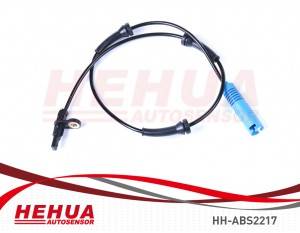ABS Sensor HH-ABS3192
HEHUA NO.: HH-ABS3192
OEM NO.:
SU9825
5S8363
ALS530
970063
AB2018
2ABS2267
15716205
FITTING POSITIME:FRONT LEFT RIGHT
APPLICATION:
CHEVROLET SILVERADO 2500 1999-2000
CHEVROLET SUBURBAN 2500 2000
GMC SIERRA 2500 1999-2000
GMC YUKON XL 2500 2000
ABS SENSORS: BASIC PRINCIPLES Importance of ABS sensors
The increasing complexity of the traffic situation on our roads is placing high demands on car drivers. Driver assistance systems relieve the burden on the driver and optimise road safety. As a result, state-of-the-art driving assistance systems are now included as standard on virtually all new European vehicles. This also means that workshops are being faced with new challenges.
Nowadays, the vehicle electronics play a key role in all comfort and safety equipment. Optimal interaction between complex electronic systems ensures that the vehicle operates without problems, and this, in turn, increases road safety.
Intelligent communication of data between electronic vehicle systems is supported by sensors. When it comes to driving safety, speed sensors play a particularly important role, and this is reflected by their varied use in a number of different
vehicle systems.
They are used by the control units in driving assistance systems such as ABS, TCS, ESP, or ACC in order to detect the wheel speed.
The wheel speed information is also provided to other systems (engine, transmission, navigation, and chassis control systems) via data lines by the ABS control unit.
As a result of their varied use, speed sensors contribute directly to the driving dynamics, driving safety, driving comfort, lower fuel consumption, and lower emissions. Wheel speed sensors are often also called ABS sensors as they were used in vehicles for the first time when ABS was introduced.
Wheel speed sensors can be designed as active or passive sensors, depending on how they operate. A clear and precise way of distinguishing or categorising them has not been defined.
The following strategy has therefore proven useful in day-to-day workshop activities:
If a sensor is only “activated” when a supply voltage is applied and then generates an output signal, this is an “active” sensor.
If a sensor operates without additional supply voltage applied, this is a “passive” sensor.
INDUCTIVE SPEED SENSOR AND ACTIVE WHEEL SPEED SENSORS: COMPARISON Inductive speed sensor, passive sensors









